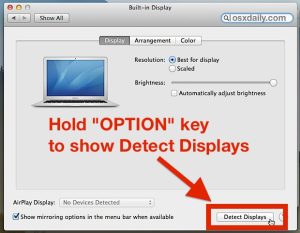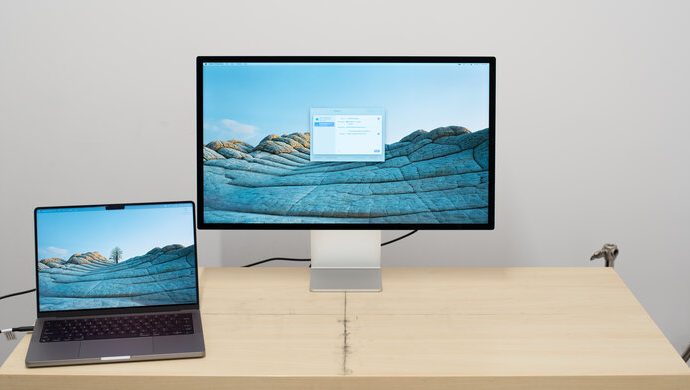Introduction: To enhance both productivity and the size of what you see, connect your Mac to an additional display. can enhance productivity and provide a larger viewing experience. Regardless, there are situations where your Mac may not acknowledge the connected external display. In case you encounter these problems, no need to fret; we have
Introduction:
To enhance both productivity and the size of what you see, connect your Mac to an additional display. can enhance productivity and provide a larger viewing experience. Regardless, there are situations where your Mac may not acknowledge the connected external display. In case you encounter these problems, no need to fret; we have your back. The following article will outline the troubleshooting steps that can be taken to address any difficulties in detecting external displays on your Mac.
Detect Displays in System Settings:
Start troubleshooting by checking whether there is a connected display available in your System Settings. Follow these steps:
Click on the Apple menu “System Preferences.” should be selected.
Scroll down if needed to locate it.
Hold onto the Option key in order to uncover the “Detect Displays” button. Click on it to detect the connected display.

Image by:https://osxdaily.com/
Additional Troubleshooting Tips:
If the “Detect Displays” option didn’t work, try the following tips:
Detach the monitor from your Mac and subsequently attach it again. and then reinsert it into its designated port.. At times, a straightforward reconnection can resolve the problem.
Verify that the cable joining your Mac and the external display is tightly secured to the correct ports on both sides.
Verify that you’re using the correct cable to connect your display. Compatibility issues can arise from using the incorrect cable.
Check your Mac’s technical specifications to guarantee that the connected display is endorsed. Refer to the “Display Support” or “Video Support” section in the Help menu.
Ensure Correct Use of Adapters:
Make sure you have the correct adapter for connecting the external display, make certain it is suitable for your Mac. Different Mac models may call for particular converters. Consult the support article provided by Apple involving adapters designed for use with Thunderbolt 4, Thunderbolt 3, or USB-C ports.
Put Your Mac to Sleep and Then Wake It:
Sometimes, putting your Mac to sleep and waking it up can trigger the detection of the external display. Try this method as it has worked for some users confronting analogous challenges.

Image by:https://www.dssw.co.uk/
Third-Party Display Consideration
If you have opted for a display made by a different company, check the documentation given to ensure proper connection based on the manufacturer’s instructions An incorrect setup might lead to issues with recognition.
Conclusion:
Troubleshooting Mac external display recognition issues can be a simple process with the right approach. By implementing the procedures and recommendations outlined in this handbook, you ought to be capable of resolving the dilemma. Afterward, you can appreciate the perks of using an additional screen with your Mac. In case the problem continues, reflect on contacting Apple support for additional guidance.

















Leave a Comment
Your email address will not be published. Required fields are marked with *